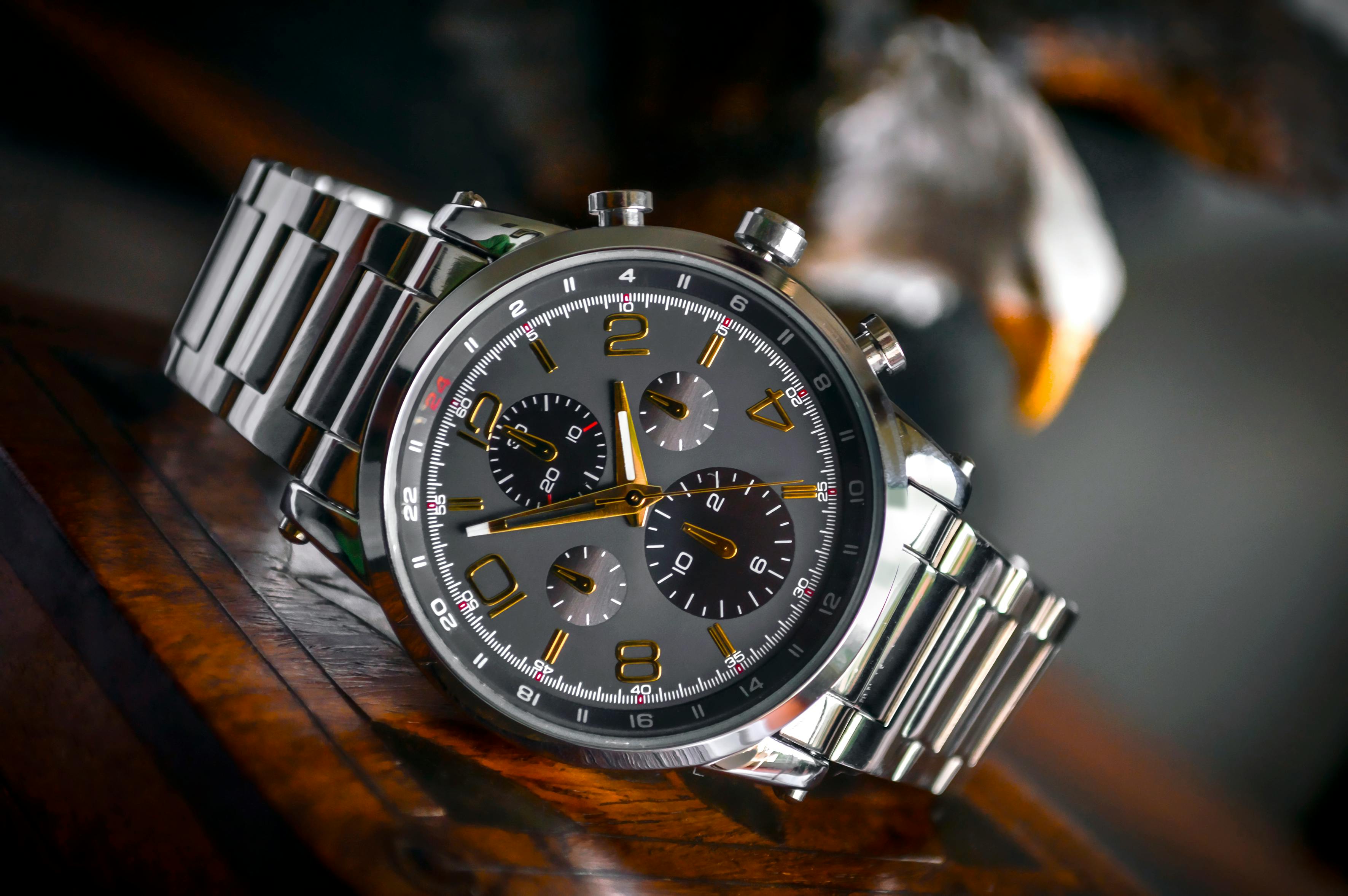
1. Introduction: Setting the Stage
The crown of a wristwatch is one of its smallest yet most critical components. Often overlooked by casual observers, the crown serves as the primary interface between the user and the intricate mechanism of the watch. Whether it is used for winding the movement, setting the time, or controlling additional functions, the crown plays a pivotal role in the daily use of a timepiece.
Throughout history, crown design has undergone significant evolution, moving from simple practicality to a harmonious blend of aesthetics and technology. In modern wristwatches, the crown not only serves as a functional tool but also stands as a symbol of innovation and craftsmanship. Through careful design and material selection, it adds visual balance to the watch while reflecting the brand’s unique identity. This article explores the critical importance of watch crown design, delving into materials, functionality, aesthetics, and emerging trends in watchmaking.

2. Materials in Watch Crown Design
The choice of materials is a foundational aspect of crown design, influencing its durability, visual appeal, and integration with the watch’s overall aesthetic.
Common Materials
- Rostfreier Stahl
Stainless steel is a popular choice due to its durability and resistance to corrosion. Frequently used in sports and everyday watches, it offers affordability and resilience, making it a go-to material for large-scale production. - Gold and Platinum
For luxury watches(such as Rolex, Omega, etc. ), crowns made of gold or platinum provide a touch of opulence. These materials not only enhance the aesthetic appeal but also complement the precious metal cases. - Titan
Known for being lightweight yet strong, titanium crowns are ideal for high-performance or aviation-inspired watches. Additionally, its hypoallergenic properties make it suitable for users with sensitive skin.
Innovative Materials
- Keramik
Ceramic crowns combine stylish looks with functionality, offering excellent scratch resistance. This material is particularly favored in modern and minimalist designs. - Carbon Fiber and Synthetic Composites
These advanced materials provide a futuristic visual appeal, making them ideal for cutting-edge, tech-inspired watch designs. Their lightweight nature also enhances the overall wearability of the watch.
Design Considerations for Material Selection
When selecting materials for the crown, watchmakers must account for factors like corrosion resistance, durability, and compatibility with the case. For instance, in diving watches, materials with high resistance to corrosion are critical, whereas dress watches often prioritize visual harmony.

3. Functional Aspects of Crown Design
While the aesthetic appeal of the crown is undeniable, its functionality is paramount.
Water Resistance and Sealing Mechanisms
One of the crown’s primary responsibilities is to maintain the watch’s water resistance. Screw-down crowns, common in diving watches, create a secure seal to keep out moisture and dust. High-end brands often use multilayer sealing techniques to ensure optimal performance under extreme conditions.
Ergonomics and User Interaction
The design of a crown should focus on user comfort. Features like textured surfaces, appropriate sizing, and strategic placement all contribute to ease of use. For instance, crowns with knurled edges or ridges provide enhanced grip, while oversized crowns cater to users who require frequent adjustments.
Expanded Functionalities
Modern watches incorporate additional functionalities into the crown, such as starting a chronograph, setting an alarm, or controlling smart features. This requires precision engineering to ensure the crown remains reliable and user-friendly.

4. Aesthetic Elements of Watch Crown Design
The crown plays an essential role in defining the visual identity of a watch. It balances the overall design and highlights the brand’s philosophy.
Shapes and Styles
Crown shapes range from the classic round design to more intricate forms such as onion-shaped or hexagonal crowns. These variations enhance the watch’s individuality and complement its thematic intent. For instance, onion-shaped crowns are often associated with vintage-inspired watches, while geometric designs add a modern edge.
Decorative Features
Luxury watches often feature crowns adorned with engraved logos, gemstones, or intricate patterns, elevating their artistic value and offering a personalized touch. These details enhance the wearer’s emotional connection to the timepiece.
Proportions and Placement
The crown’s size and position significantly influence the watch’s visual balance. Oversized crowns lend a bold, rugged appearance, while smaller crowns are more appropriate for elegant dress watches. These proportions directly impact how the wearer perceives the watch’s character.

5. Challenges and Innovations in Crown Design
Designing a crown presents unique challenges while opening opportunities for innovation.
Challenges Faced by Designers
- Balancing Functionality and Aesthetics
Designers must achieve a delicate balance between practical utility and visual appeal. This is especially challenging in ultra-thin watches, where space is limited. - Durability and Longevity
As a frequently used external component, the crown is prone to wear and tear, making material and structural integrity paramount. - Integrating Complex Features
Multi-functional watches require crowns that can accommodate intricate mechanisms while remaining user-friendly.
Emerging Trends and Innovations
- Smart Technology Integration
In the smartwatch segment, crowns now serve additional digital roles, such as navigating menus or activating specific features through rotation. - Unconventional Forms
Designers are exploring recessed or hidden crowns to achieve sleeker profiles and minimalist aesthetics. - Sustainable Materials
With growing environmental consciousness, brands are beginning to prioritize eco-friendly materials in crown design.

6. Conclusion: Why Crown Design Deserves Attention
The crown is more than just a functional component—it embodies a watchmaker’s commitment to precision, innovation, and artistry. By harmonizing material selection, ergonomic functionality, and aesthetic appeal, the crown enhances the watch’s performance and charm.
Unter OPS, we firmly believe that even the smallest details, such as the crown, contribute significantly to a watch’s overall character and functionality. Through the thoughtful use of innovative materials, exquisite craftsmanship, and meticulous design, we create timepieces that not only meet the practical needs of our wearers but also captivate their emotions. After all, every crown has its own story, and at OPS, we are dedicated to crafting yours.
